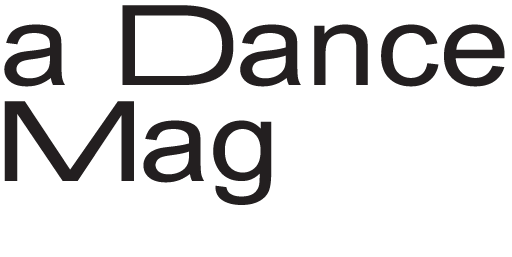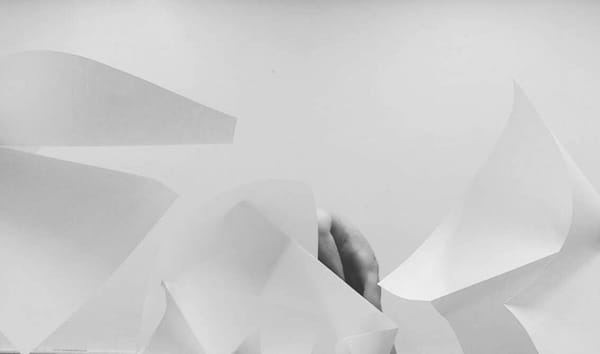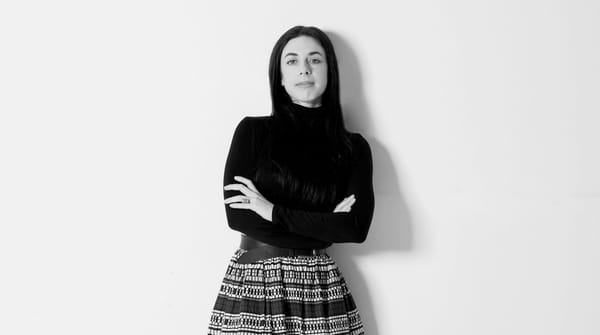Can Photography Capture the Invisible Energies Moving Within Us?
Photographer Jennifer Lee Delić and dancer-fighter Rasmus Branders push against the limits of the camera. Using flowing fabrics and contrasts of light, their collaboration seeks to give form to the internal dance of masculine and feminine energy we all embody.

Jennifer Lee Delić’s photographs attempt to capture outer and inner movement. In her recent series: Caught Between Fight & Flow: A Story Inner of Duality, she collaborates with Rasmus Branders to explore the dialogue between two internal forces, the masculine and the feminine, as energies that coexist and continually reshape each other.
For Jennifer, photography is a way of translating energy into form. “Masculine and feminine energies aren’t about gender,” she says. “They’re two polar forces we all carry within us. In this project, I wanted to make that inner duality tangible.” She used black and white fabrics as visual extensions of Rasmus’s body, flowing and intertwining as his movements evolved. Hard light highlighted tension and conflict, while soft diffusion conveyed surrender and harmony. The visual language became a dance between contrasts, sharp and fluid, grounded and ethereal, making subtle shifts in energy visible.
Rasmus approaches movement with a similar understanding. “I started acting and dancing at five. Martial arts came later, and by seventeen I was sparring seriously,” he recalls. “I never saw a difference between the two. One movement exists within the other. Dancing expresses emotion, letting the audience vibrate with you. Fighting hides emotion so the opponent can’t anticipate. If you can dance, you can fight. If you can fight, you can dance.” For him, the interplay between strength and softness, discipline and surrender, is instinctive yet conscious, a rhythm he navigates in every step and gesture.
Before stepping in front of the camera, Jennifer and Rasmus discussed the emotional trajectory they wanted to explore. The session would move from struggle to ease, from tension to balance. Jennifer offered cues rather than instructions, framing the shoot as a shared process of discovery. Rasmus responded intuitively, blending physical precision with emotional presence. “Being in front of the camera is a subtle shift from performing or fighting,” he says. “It’s still a performance, but one that resonates only with true emotion. Jennifer knows exactly how to capture that.”
The fabrics became extensions of his energy. “They responded to how he moved, to gravity, to breath,” Jennifer says. What unfolded in the studio was not a sequence of staged poses but an evolving conversation between two people attuned to rhythm. Each gesture became a visual trace of the dialogue between opposites, a living map of tension and release.
Photography often sits in tension with the idea of movement. It interrupts time, isolates an instant, and freezes what is fleeting. Yet Jennifer sees this limitation as an opening. Within stillness, she searches for motion’s residue, the echo of what just passed or what is about to arrive. “The camera isolates fragments of the dance, those fleeting moments where strength and softness intersect,” she explains. Rasmus adds, “In all art, we move between staccato and legato, hard and soft, static and fluent.”
Each image operates like a quiet choreography of its own. Micro-shifts—a breath, a tilt of the head, a slight contraction of muscle—become records of feeling. The viewer senses the continuity of flow without needing to see its beginning or end. Rasmus describes this as a constant negotiation: “Whenever I teach dance, I ask my students to consciously choose: are you softly flowing into a plié, or stomping and chest-bumping? Dance and martial arts both require acute control of body and mind, until our bodies start moving for us and we have the privilege to just react, not think.”
Collaboration is integral to Jennifer’s work. “Once I meet the model, the idea starts to evolve around them. Their energy changes everything,” she says. With Rasmus, that evolution was immediate. His understanding of physical expression allowed him to move beyond imitation. He didn’t illustrate the theme; he embodied it," she states. “Great teachers helped me understand how to express the emotions we otherwise wouldn’t dare to feel,” Rasmus reflects. “At a certain point, struggle became understanding. I knew what I was working to achieve, even if the process is never complete.”
The session became less about direction and more about trust, a continuous exchange of energy. “The line between photographer and subject blurred,” Jennifer recalls. “It felt more like a shared performance.” In the images, that mutual understanding becomes visible. The body and camera move together, fabrics connecting perspectives into a single gesture. Light follows this rhythm, alternating between clarity and shadow, echoing the balance the project seeks to portray.
Photography, for Jennifer, is both record and inquiry. It allows her to explore identity and emotion through observation while remaining receptive. “Every image is a fragment of a larger conversation, one moment of recognition within an ongoing search,” she says. “A photograph can’t capture someone’s entire identity, but it can capture one fragment of a much larger story.” Rasmus echoes this sentiment through his embodied practice: each movement is a choice, each pause an opportunity for reflection.
In the resulting series, power and vulnerability, control and ease, oscillate within each frame. The fabric binds and releases. The light exposes and shelters. Jennifer sees each photograph as a single frame in a larger pursuit. Rasmus measures the series’ success by a simple metric: did you feel something?





